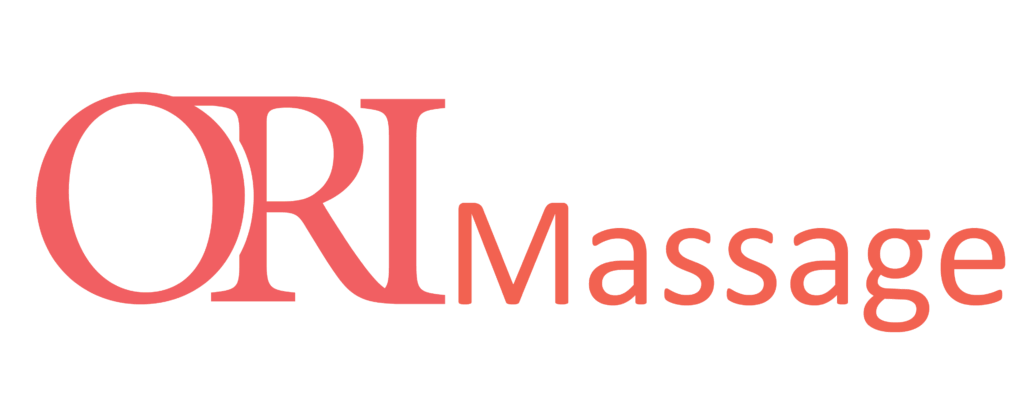When you think about relaxation and therapeutic touch, two titles come to mind: masseuse and massage therapist. While they may seem interchangeable in casual conversation, there are significant differences between the two professions that affect their training, expertise, and the services they provide. Understanding the distinction between a masseuse and a massage therapist is essential, whether you are seeking treatment or considering a career in the field. In this article, we will delve into the nuances of these roles, exploring their training, techniques, clientele, and ethical considerations, ultimately shedding light on the keyword masseuse vs. massage therapist.
Masseuse vs. Massage Therapist: Understanding the Terminology

The terms “masseuse” and “massage therapist” can often create confusion among clients and practitioners alike. To clarify these distinctions, let’s explore the depth of each term and how they have evolved over time.
The Origin of Terms

Historically, the term masseuse originated from the French word “massage,” referring to the act of kneading or rubbing muscles for relaxation or therapy. It was traditionally used to refer specifically to women who performed such services. On the other hand, the title massage therapist is more contemporary and encompasses anyone—regardless of gender—who has completed formal training and is certified to provide massage therapy.
With the growing recognition of massage as a legitimate healthcare profession, the term massage therapist has become the preferred nomenclature in many regions. It conveys professionalism and reflects comprehensive training, while the term masseuse may carry outdated connotations or imply a lack of credentials.
Gender Implications

Traditionally, the term masseuse has been associated with women, while masseur refers to male practitioners. However, the industry has shifted towards using the gender-neutral term massage therapist, which encompasses both genders and promotes inclusivity. This evolution is reflective of broader societal changes towards equality and the professionalization of various fields.
Understanding the gender implications of these terms helps highlight the ongoing movement toward professional recognition in massage therapy. By embracing the title of massage therapist, practitioners signal their commitment to high standards of care, which benefits both clients and the profession as a whole.
Professions and Credentials

Both masseuses and massage therapists may perform similar tasks, but their qualifications and levels of training significantly differ. In many jurisdictions, a massage therapist must complete a structured educational program that includes anatomy, physiology, ethics, and various massage techniques, leading to certification or licensure. This extensive training equips them to address specific health concerns and customize treatments according to client needs.
Conversely, the term masseuse may not require formal education or licensing in some areas. While some individuals may genuinely possess skills and experience in providing massages, the lack of standardization can lead to concerns regarding safety and effectiveness. Therefore, if you’re considering a massage for therapeutic purposes, it’s crucial to ensure that you seek out a qualified massage therapist to guarantee a safe and effective treatment.
Training and Education in Massage Therapy

One of the primary differences between a masseuse and a massage therapist lies in the training and education required for each role. The pathways to becoming a licensed massage therapist often involve rigorous coursework and hands-on practice, which sets them apart significantly.
Curriculum Overview

A comprehensive massage therapy program usually covers diverse subjects that equip aspiring professionals with the knowledge and skills they need.
- Anatomy and Physiology: Understanding human anatomy is crucial for any massage practitioner. Students learn about muscle groups, skeletal structure, and the physiological effects of massage on the body. This foundational knowledge allows massage therapists to tailor their techniques to specific areas, enhancing therapeutic outcomes.
- Massage Techniques: Aspiring massage therapists train in various modalities, including Swedish massage, deep tissue, sports massage, and more. Each technique has its unique benefits and applications, and learning multiple approaches enables therapists to cater to a wide range of client needs.
- Ethics and Professionalism: Clients place great trust in their therapists, making ethics a critical component of training. Programs emphasize the importance of maintaining client confidentiality, informed consent, and establishing boundaries. This focus fosters a professional environment that respects the client’s dignity and comfort.
Hands-On Training
Practical experience is another vital aspect of training for massage therapists. Most programs require students to engage in supervised clinical practice where they work with real clients. This experience not only hones their technical skills but also builds confidence and communication abilities essential for effective client interaction.
Additionally, this hands-on approach prepares graduates for the realities of working in various environments, from spas and wellness centers to clinics and hospitals. Real-world experience enhances their ability to adapt to different client scenarios and ensures that they are well-equipped to handle diverse needs.
Licensing and Certification

Upon completion of their education, aspiring massage therapists typically take a national or state exam to obtain licensure. This credentialing process varies by location but generally requires passing a standardized test that assesses knowledge of anatomy, technique, ethics, and safety protocols.
In contrast, those identifying as masseuses may not need any formal certification or licensing, although many choose to pursue informal training or workshops. This lack of regulation means that clients should exercise caution when selecting a practitioner and prioritize those with verified credentials.
Masseuse vs. Massage Therapist: Techniques and Modalities

The world of massage therapy is vast, encompassing countless techniques and modalities designed to target different ailments and promote overall well-being. Understanding the variety of approaches is essential when discerning the difference between a masseuse and a massage therapist.
Common Techniques Employed by Massage Therapists

Professional massage therapists employ various techniques to address specific client needs and preferences. Here are three common modalities:
- Swedish Massage: Often regarded as the most common type of massage, Swedish massage focuses on relaxing the entire body through long, gentle strokes, kneading, and circular movements. It improves circulation, relieves tension, and enhances flexibility.
- Deep Tissue Massage: This technique targets deeper layers of muscles and connective tissues, making it ideal for chronic pain relief and injury recovery. Deep tissue massage involves slower, more intense pressure that encourages the release of tension and aids in healing.
- Sports Massage: Tailored for athletes, this modality combines techniques from various styles to enhance performance and prevent injuries. Sports massage can be beneficial both pre- and post-event, focusing on specific muscle groups used during athletic activities.
Unique Approaches of Non-Certified Masseuses
/prod01/channel_2/media/mccms/content-assets/academics/explore-health-care-careers/massage-therapy-career-3592835-0025-hero-desktop.jpg)
While some self-identified masseuses may have developed a particular style or technique, their approaches may lack the breadth and depth of knowledge held by licensed massage therapists. Without formal training, they may rely on intuition or personal experiences rather than evidence-based practices.
This is not to undermine the skill of individuals who offer massage services without certification; rather, it highlights potential limitations in their understanding of anatomy and therapeutic techniques. Clients should consider the implications of choosing a masseuse versus a certified massage therapist, especially when seeking treatment for specific issues or injuries.
The Importance of Personalization

Regardless of whether one sees a masseuse or a massage therapist, the best results come from personalized treatments. Licensed massage therapists are trained to assess individual client needs and preferences, adjusting their techniques based on feedback and observations. They can identify problem areas, recommend complementary therapies, and create tailored sessions that maximize therapeutic benefits.
On the other hand, those seeking services from non-certified masseuses may find that treatments are less customized or focused on delivering a general experience. For instance, a masseuse may employ the same method for every client, potentially overlooking specific concerns or limitations.
Read more: How to Become a Professional Massage Therapist: Step-by-Step Guide
Masseuse vs. Massage Therapist: Clientele and Expectations

Understanding the clientele served by masseuses and massage therapists sheds light on the differing expectations and experiences offered by each.
Target Audience for Massage Therapists

Licensed massage therapists typically cater to a diverse clientele. People from all walks of life—athletes, office workers, parents, and seniors—seek their services for various reasons, including stress relief, pain management, rehabilitation, and relaxation. Many clients expect professionalism, a clean environment, and a thorough assessment of their needs before beginning treatment.
Because they are trained to address specific health issues, massage therapists often collaborate with medical professionals, referring clients when necessary and integrating massage therapy into a larger wellness plan. This collaboration fosters trust and demonstrates a commitment to holistic health.
Demographics of Masseuses

While some masseuses may attract a loyal following, their clientele often consists of individuals seeking quick relaxation or indulgent experiences rather than therapeutic interventions. Many people who opt for services from non-certified practitioners may have lower expectations regarding professionalism, consistency, or efficacy.
Masseuses may also operate in settings like spas, resorts, or private homes, where the ambiance is often centered around relaxation and pampering. However, clients seeking therapeutic benefits may find that unregulated practitioners cannot meet their needs adequately.
Shaping Client Expectations

Clients seeking massage services should be well-informed regarding what to expect based on the practitioner’s credentials. When opting for a licensed massage therapist, clients can anticipate an initial consultation that assesses their individual needs, followed by a structured treatment plan tailored to address specific concerns.
In contrast, clients visiting a masseuse should approach the experience with an open mind, understanding that the level of expertise may vary considerably. Ultimately, recognizing the distinctions between the two roles empowers clients to make informed choices about their massage experiences.
| Criteria | Masseuse | Massage Therapist |
|---|---|---|
| Training | Informal or no training | Formal education certification |
| Techniques | Limited or non-standardized | Evidence-based modalities |
| Professionalism | Variable | High standards of practice |
| Clientele | Varied, often casual | Diverse, health-focused |
Masseuse vs. Massage Therapist: Ethical Considerations and Professional Standards

As with any profession in the health and wellness industry, ethical considerations play a crucial role in shaping the standards of practice for both masseuses and massage therapists. Understanding these principles helps clients discern the professionalism expected in each context.
Professional Ethics for Massage Therapists
Massage therapists adhere to a strict code of ethics established by professional organizations and regulatory bodies. Key principles include:
- Client Safety: Priority is placed on creating a safe environment for clients. This includes maintaining proper hygiene, obtaining informed consent, and tailoring treatments to individual needs and health conditions.
- Confidentiality: Respecting client privacy is paramount. Massage therapists maintain confidentiality regarding personal information and treatment details, fostering a trusting therapeutic relationship.
- Boundaries and Respect: Establishing clear boundaries is vital to ensuring that clients feel comfortable and secure throughout their sessions. Massage therapists are trained to navigate sensitive topics, ensuring that the focus remains on therapeutic goals rather than any inappropriate interactions.
Lack of Regulation for Masseuses
Since the term masseuse lacks standardization, ethical guidelines for non-certified practitioners can be inconsistent. While some individuals may operate with integrity, others may disregard ethical considerations entirely.
Potential risks associated with receiving massage services from unregulated practitioners can include inadequate hygiene, lack of informed consent, or inappropriate conduct during treatments. This inconsistency underscores the importance of vetting practitioners before engaging their services, particularly for vulnerable individuals seeking therapeutic relief.
Empowering Clients Through Knowledge
To navigate the complex landscape of massage services effectively, clients must empower themselves with knowledge. Familiarizing themselves with the services provided by licensed massage therapists versus non-certified masseuses equips them to make informed decisions that prioritize their safety and well-being.
By advocating for reputable practices, clients can help elevate the standards of care within the industry, encouraging greater professionalism and accountability among practitioners.
Conclusion

The distinction between masseuse and massage therapist extends far beyond mere semantics; it encompasses a wealth of factors related to training, techniques, clientele, and ethical considerations. As the industry evolves, the preference for the term massage therapist signifies a commitment to high standards, professionalism, and quality care.
Educating oneself about these differences is essential for clients seeking therapeutic services, allowing them to make informed choices that align with their health and wellness goals. By prioritizing trained and certified professionals, clients can ensure a more enriching and beneficial massage experience that addresses their specific needs, ultimately contributing to their overall well-being.
